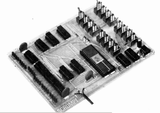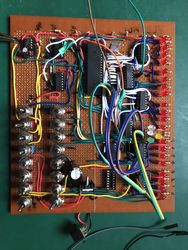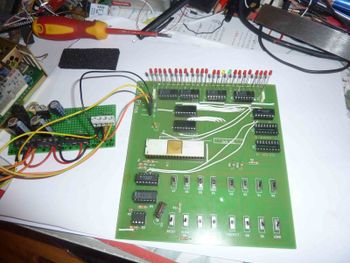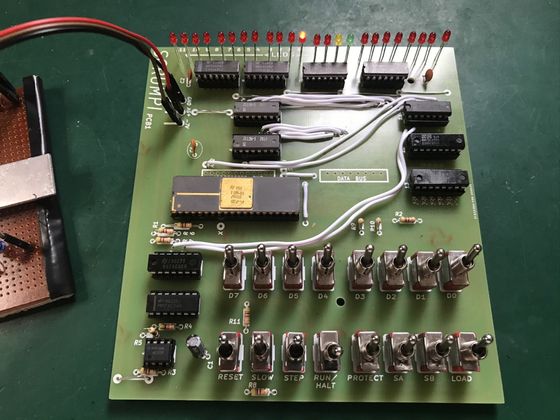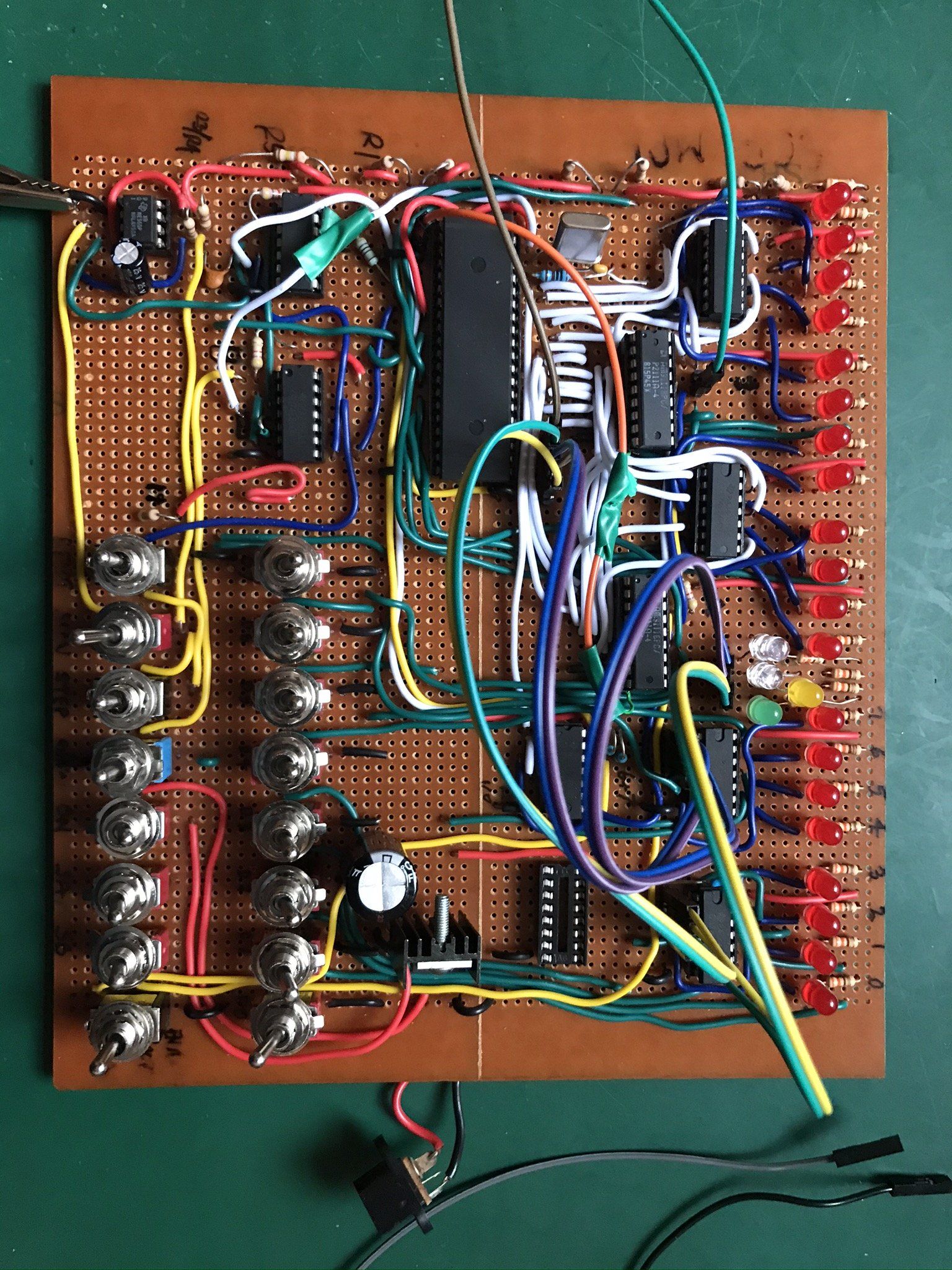The BYWOOD SCRUMPI preservation site
The SCRUMPI was the very first single board home computer kit made in the UK launched at the end of 1976 by Bywood Electronics. It made use of the National Semiconductor Simple Cost-effective Micro Processor (SC/MP) chip known as SCAMP. Unfortunately the designer of the SCRUMPI tragically died young, which stopped its development. A well written background to the system and more importantly to the man John Miller-Kirkpatrick (August 1946 – December 1978) written by Tony Smith can be found on The Register - link given under more info along with other useful sites.

Features
With 256 bytes of RAM and only a handful of chips with 16 switches and 24 LED lamps the SCRUMPI was not an advanced computer...
A significantly upgraded one the SCRUMPI II that had an EPROM was designed by Mark Phillips and marketed by BYWOOD in late 1977
In May 1978 they started shipping the SCRUMPI 3 with TV out and ASCII keyboard with a tape and Vero 502 case option.
There were plans for a SCRUMPI 4 based on the new single chip NIBL (BASIC) ROM that would use a terminal - like a SCRUMPI 3
but, sadly JMK passed away before it was launched.
Saving a bit of history
A unique piece of history that is at risk of being lost as we are only aware of one or two each of the first and second models worldwide. The SCRUMPI 3 is lost as far as we are aware... but, Paul Robson has created an emulator that allows you to experience it working.
We are not sure a working version 4 existed but, the modern Karen Orton PICL project (a two chip design) is probably close to what was intended.
We are not sure a working version 4 existed but, the modern Karen Orton PICL project (a two chip design) is probably close to what was intended.
Who are we
As a few electronics and computing enthusiasts we are determined through the creation of modern clones to ensure that these devices and their history can be preserved in a museum setting while also allowing people to create and explore one for themselves.
Building One

“I tried one of em switch program things years ago - its ard work ”
Forum User, North of England

“What do you want to make one of those antiques for?”
Colleague, Wales

“Cest magnifique”
French person, France
Links and Further Information
For more information we suggest you should:
CONTACT US
CONTACT US
We’d love to hear from you if you have one of these machines - you can use the from below to drop us a mail - or direct to tim at the bottom of the site.
